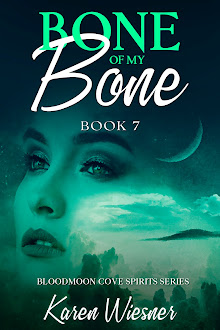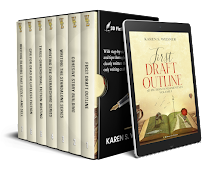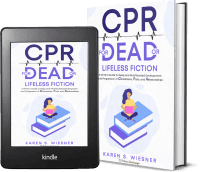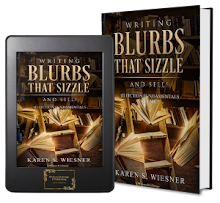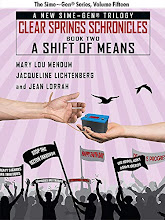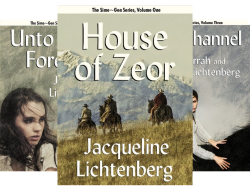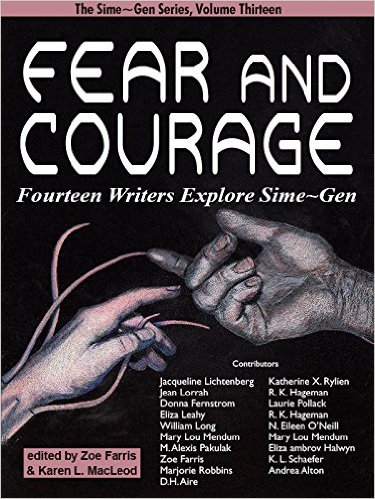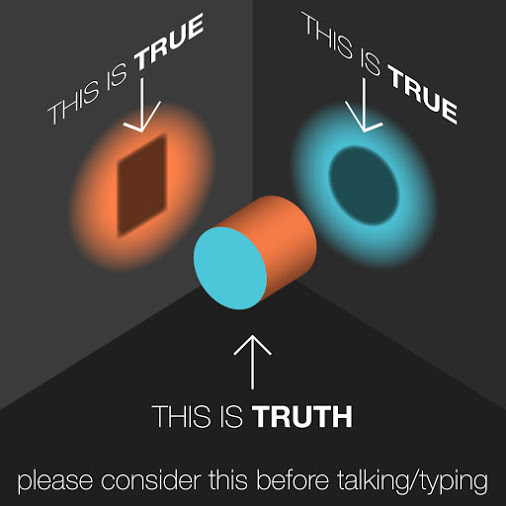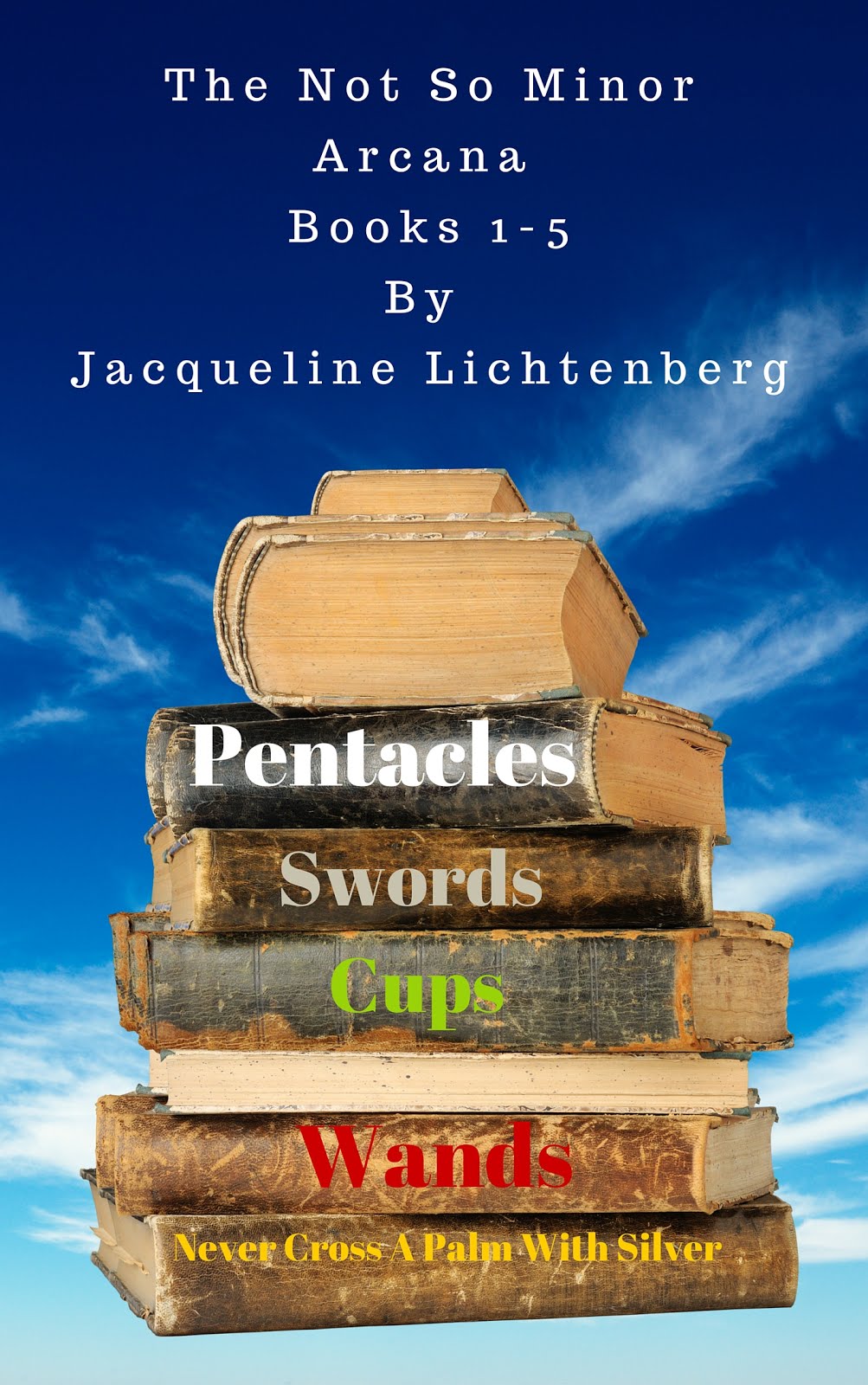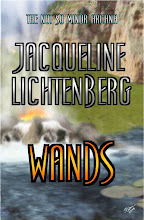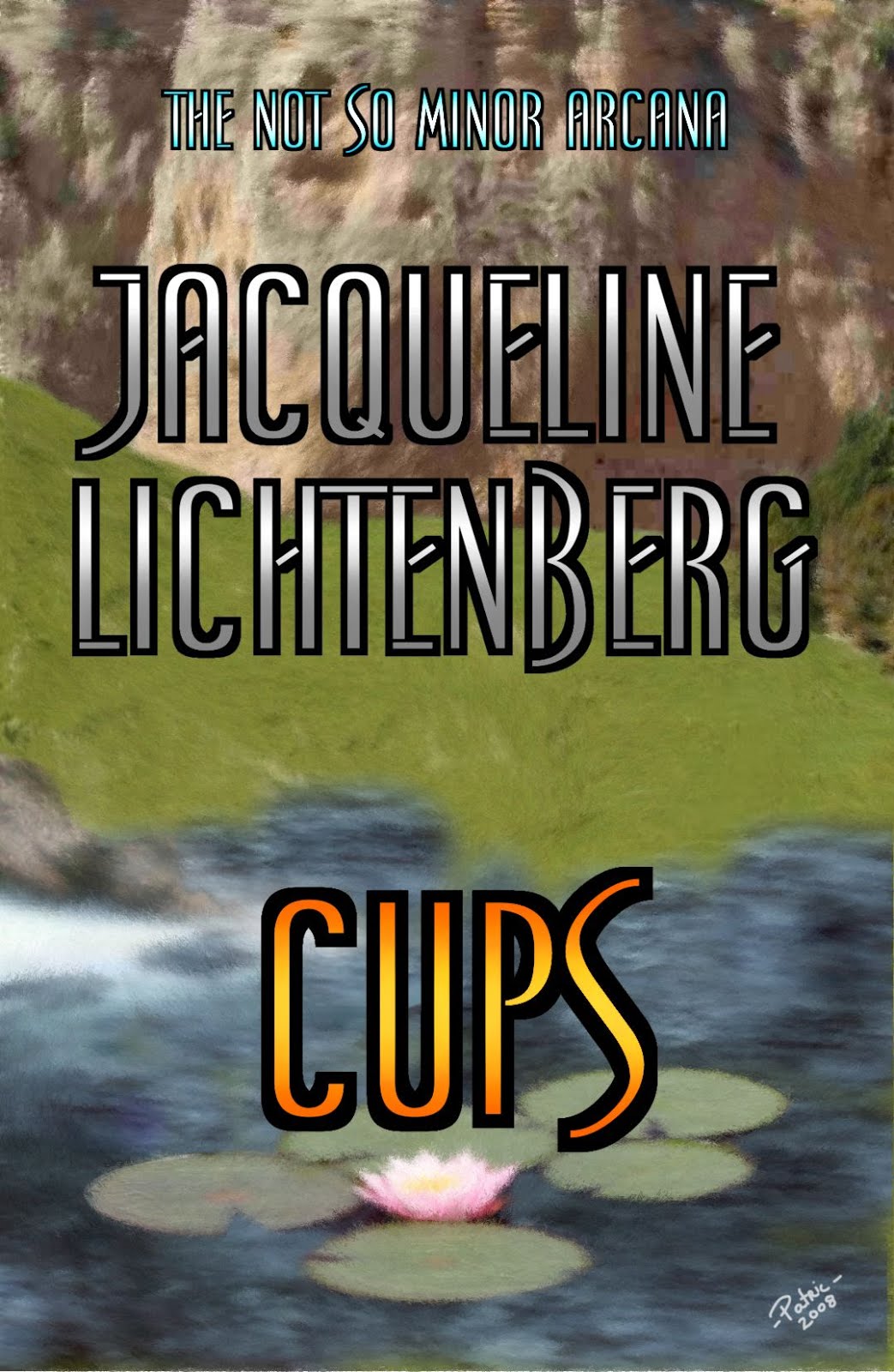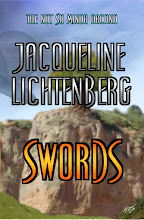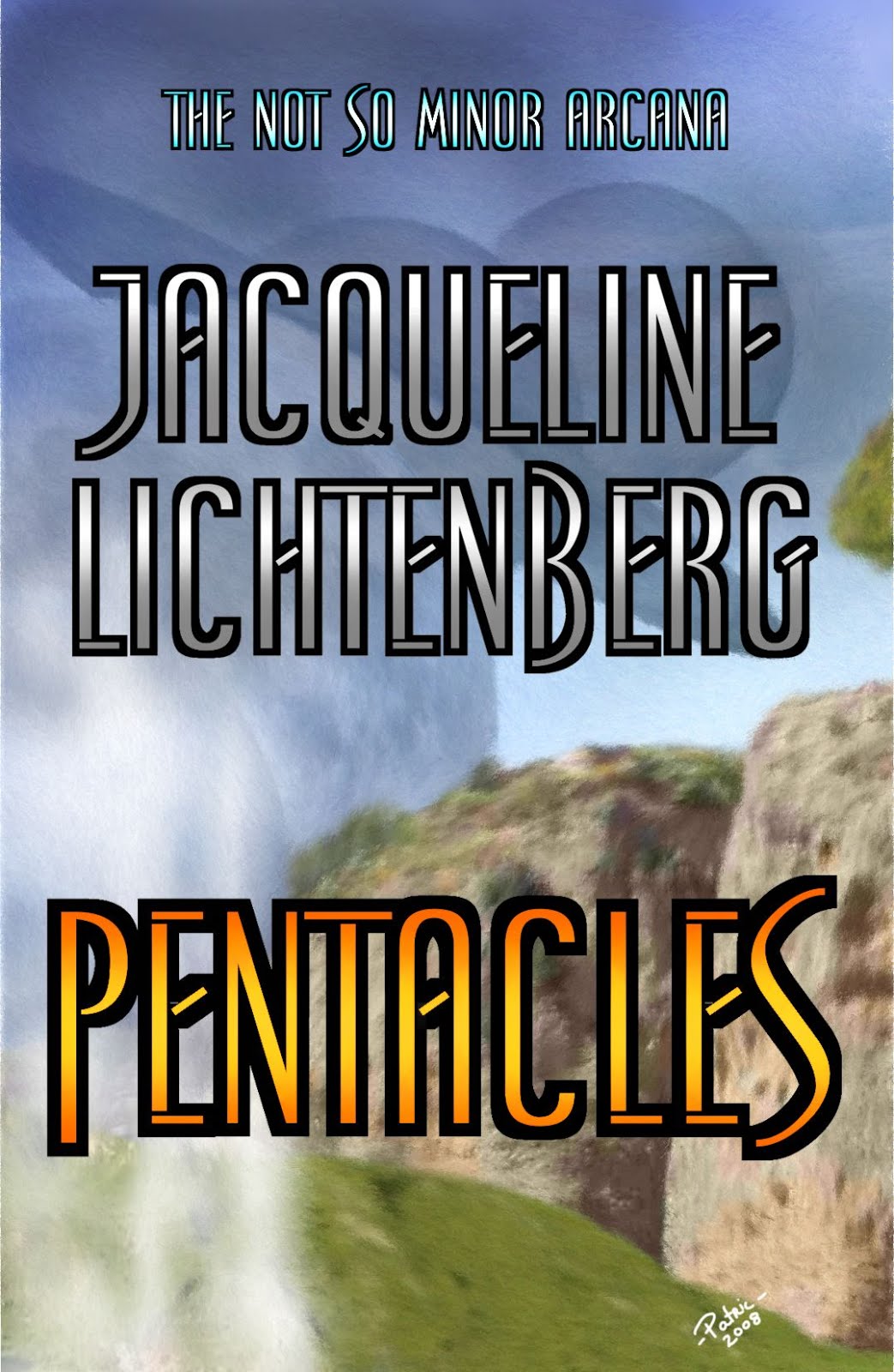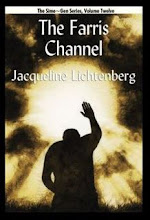Writer's Craft Article by Karen S. Wiesner
I Want to
Write a Series. Now What?
Part 1
Based on Writing the Standalone Series (formerly titled
Writing the Fiction Series {The Guide to Novel and Novellas})

“The [series] tiger
springs in the new year. Us he devours.” ~T. S. Eliot
This is the first of two posts dealing with writing a series.
“The disease of writing is dangerous and contagious.” (Abelard to Heloise)
Following a series can also become a relentless obsession and it’s the hallmark of why readers read series, why writers write them, and why publishers publish them. The mania is spreading. So how do you get started?
Whether you’ve been pondering starting your own or you’ve finished a first book and don’t want to let go, there are a lot of things to work out when writing a fiction series.
Developing a Plan for Your Series
If a series doesn’t have a “tie” that connects each book, it could hardly be called a series. Developing the Ties from one book to the next prevents readers from questioning the point of the series. These Ties can be any or even all of the following:
·
Recurring character or couple (think Aloysius Pendergast in Douglas
Preston and Lincoln Child’s Pendergast Series or J.D. Robb’s Eve and Roarke from the In Death
Series)
·
Central group of characters (such as George
R. R. Martin’s A Song of Ice and Fire and the members of Kate Jacobs’ Friday Night Knitting Club)
·
A plot or premise (as in Robin Cook’s Jack Stapleton medical
mysteries or Dan Brown’s treasure hunts in the Robert Langdon Series)
· Setting (Forks, Washington in Twilight or Harry Potter’s Hogwarts)
As in the series examples mentioned above, what connects the books in a series should be evident in each entry. Ensuring this kind of continuity requires advance planning. Ideally, you want to start developing your series as early as you can. To get things going, let’s consider what separates series writing from novel writing.
1) Understanding Story Arcs Verses Series Arcs
Every work of fiction has a Story Arc or a continued storyline. The Story Arc is short-term since it’s introduced, developed and concluded within the individual book. In clear contrast to a stand-alone novel, a series almost always has a Series Arc as well. A Series Arc is a long-term plot thread that’s introduced in the first book, alluded to in some way in each middle book, but is only resolved in the final series book. The only exception to this rule is an open-ended series in which all the books are stand-alones and there’s no need for a Series Arc that resolves in the last book. Earlier we mentioned examples of open-ended series like the Stapleton and Langdon ones.
Series that will have a definitive end do need a Series Arc whether clearly or subtly defined. The Series Arc is generally separate from the individual Story Arcs though they must fit together seamlessly to provide logical progression throughout the series. As an example, in Harry Potter and the Sorcerer’s Stone, the Story Arc is the sorcerer’s stone plotline. The Series Arc, in the most simplified terms, is good overcoming evil. The Series Arc runs progressively and cohesively beneath the individual Story Arcs in each successive book.
Is it necessary for a series that’s not open-ended to have a Series Arc? Absolutely! In a series that will have definitive closure, you’ve presented a nagging situation in the first book that must be settled satisfactorily in the last. Without that, readers who have invested time, money, and passion will feel cheated. To write a series is to promise an acceptable resolution. If, in the course of Brandon Mull’s Fablehaven Series, Kendra and Seth didn’t defeat the evil threatening the Fablehaven preserve and stop the plague that could have led to a hoard of imprisoned demons escaping into the world, Mull would have left his fans crying foul because he broke the pledge of a satisfactory resolution implied in the first book.
Spell out your Series Arc for yourself as much as you can so you can work from that premise from start to finish.
2) Evaluating C-S-P Series Potential
Readers fall in love with characters, settings and plots. They want conflict but don’t want you to hurt their heroes. They want different but don’t want things to change. But a character, setting or plot that doesn’t change also doesn’t evolve, doesn’t remain life-like, and eventually becomes boring.
Series characters, settings and plots
should have longevity and intriguing potential that continues to grow, never
stagnate or wane, throughout the course of a series. While none of these should
ever have a radical transplant from one book to the next, it’s crucial they’re
affected by changes. Consider the three P’s that make characters (and just as
certainly settings and plots!) three-dimensional:
1) Personality (always multi-faceted
with strengths and weaknesses, and capable of growing, being molded, deeply
delved, and stretched)
2) Problems (combining light and dark,
good and evil, simple and complex—not necessarily in equal parts)
3) Purpose (evolving goals and motivations wide enough to introduce new and unpredictable themes into a series but narrow enough for focus in individual stories)
Without the introduction of something new for series characters, settings and plots, you’ll give your readers nothing to hope for beyond the first book. The best way to plant seeds for series exploration is to evaluate your C-S-P (Character-Setting-Plot) potential. Basically what this means is you establish “Plants” in the first and middle series books that can be used at any time during the life of the series to expand all three of these components. Naturally, the sooner you set these up, the more believable they’ll be when it’s time to fully develop them. As an example, in the Robert Langdon Series, the main character frequently mentions the Mickey Mouse watch he wears—not something most grown men would be caught dead in. In his case, it was a gift from his parents on his ninth birthday, something rife with sentimental value, and, considering that much of this series revolves around 24-hour deadlines, the significance of this object is heightened. If the first time the symbolic accessory was mentioned was when Langdon was thrust in a tank of breathable oxygenated liquid in The Lost Symbol, Book 3, the reader would have been figuratively drowned as a consequence. Obviously the appropriate place to explain the watch would be in a time of passive reflection (in the first book in the series), not during life-and-death action three books in. Luckily, this item was planted early enough that its appearance over the course of the series didn’t feel contrived or convenient to the plots.
Most authors include numerous “Plants” in the first book in a series without realizing it. That doesn’t mean you shouldn’t deliberately insert them, too. When considering your C-S-P series potential, do free-form summaries for all of the questions below. Don’t worry if you can’t come up with much right away; simply use this as a jumping-off point as the series progresses. Go on the assumption that these seeds may be planted (and left mostly unexplored) in the early books for development in later titles:
·
How can you outfit all series characters with heroic traits and habits as well as
flaws and vices that can lead to natural growth as well as interesting plots?
·
What occupations, hobbies, interests,
and idiosyncrasies can you give characters that can be gradually developed?
·
What relationships and potential
enemies/villains can you add to expand the series potential?
·
What lessons, backstory or experiences
can be hinted at for later revelation and development and may lead to
suspenseful plots or emotional crises?
·
What life conditions, challenges,
trials, grudges, grief, betrayals, threats, heartaches or obsessions (romance,
marriage, divorce, parents/children, illness, medical ailment or death) can
characters face that may lead to compelling situations throughout the series?
·
What locations can you set the series
and individual books in to expand characters and plots?
·
What world, regional or local events,
holidays, important dates or disasters (natural or man-made) can provide a
catalyst?
·
What quest—fortuitous, cursed or
anywhere in-between—can be undertaken?
· What item or object can you place that can become the basis for plot, setting or character development?
Keep one rule firmly in mind when you’re planting the series seeds that will give you both longevity and flexibility for the road ahead: Always leave plenty of Plants unexplored! The last thing you want to do is lock yourself in too early. In the early books in the Pendergast Series, it was revealed that the FBI agent’s wife had been killed years earlier. Superficial details about this death were alluded to but kept sparse and flexible enough that, when the authors moved into their Helen Trilogy quite a few books later, they could easily mold this event any way they needed to and maintain believability. Had they locked down specific details early on, the trilogy might never have seen the light of day.
Hints and allusions are ideal—even required, as we’ve seen—when you’re introducing C-S-P series potential in one book and then developing in another. In real life, no one walks around with a list to show others of the people they know, the places they’ve been, or the things they’ve done. These are introduced a little at a time. In the same way, from one book to the next, you explore the facets of C-S-P slowly, developing them beyond the static state they started in as you go along instead of all at once. If you give too much detail too soon, you may find it hard to change or adapt when the time comes to use a Plant.
Additionally, keep in mind that, if no one wants to see more of these characters, settings, and the series premise that sparks plot over the long haul, the series is pointless. Always spin established facts on their axis so the reader will have a new, emotional and unexpected journey in each additional story within the series. Every offering must be at least as exciting as the one before. These are the ingredients that bring readers back for more.
In Part 2, we'll talk about organizing series details.
Karen S. Wiesner is the author of Writing the Standalone Series
Volume 3 of the 3D Fiction Fundamentals Collection
http://www.writers-exchange.com/3d-fiction-fundamentals-series/
https://karenwiesner.weebly.com/writing-reference-titles.html
Happy writing!
Karen Wiesner is an award-winning,
multi-genre author of over 150 titles and 16 series.
Visit her here:
https://karenwiesner.weebly.com/
https://karenwiesner.weebly.com/karens-quill-blog
http://www.facebook.com/KarenWiesnerAuthor







